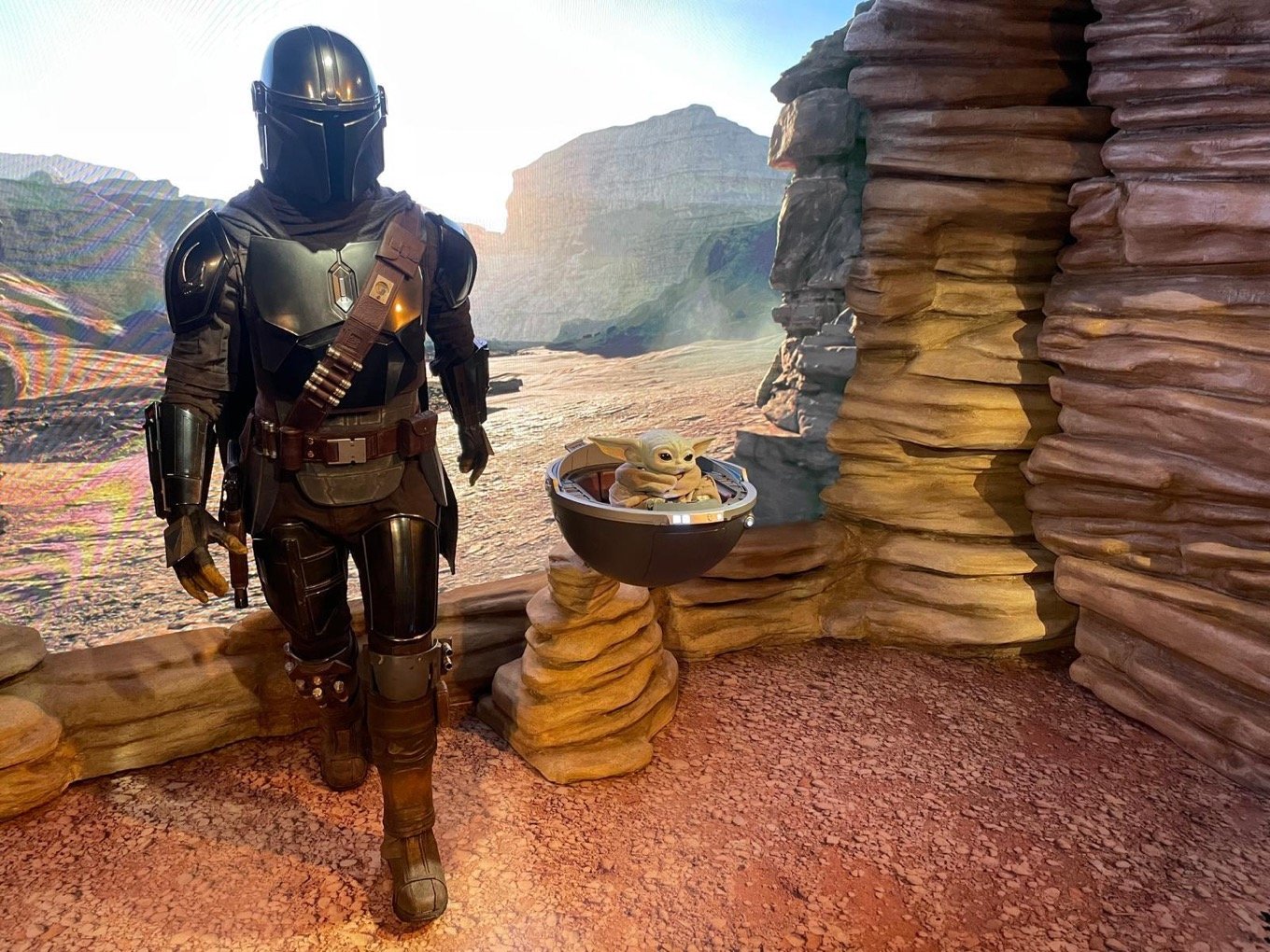
Lighting SFXs
I am experienced in creating, programming, wiring and installing lighting effects for LEGOLAND, LEGO Discovery Centres and Madame Tussauds attractions.
Lighting has been used to create a sense of realism and bring life to fantasy worlds, immersing guests within the attraction and capturing their interest in the characters’ stories.
I am proficient in using schematic diagrams, soldering components and programming lighting effects with Arduino.
Madame Tussauds - Grogu
Here I was tasked to replicate the lighting on Grogus’ Pram for a Star Wars attraction in Madame Tussauds London.
The final animatronic, fit with the pram lighting.
Design process
It was important that there were no dark spots of the prams’ resin buttons to be lit, and no significant light bleed. Initial rapid testing with just paper and white tape provided an agile method in determining the best placement of the LED strip, how much strip was needed, and the dimension requirements for mounting plates. White electrical tape demonstrated the advantage of creating light boxes in the prams’ cut-outs - as the tape helped reflect the light with fewer LEDs and spotting.
I could then model and CNC aluminium mounting in CAD, and solder 12V strip and an individual LED comfortably in the time it took for the pram to be returned from painting/finishing. A blowtorch was then used to bend the aluminium plates to the shape of the pram before fixing, as to reduce light bleed.
LEGO Model Lighting
Example LEGO Model projects were I wired and installed lighting to add atmosphere and life to static scenes.
Scenic lighting at a LEGO Discovery Centre, in which I pulled and wired 2 core cable from a control cabinet to building, street lights, and traffic lights.
Mid-build of LED and Neopixel lighting, that I programmed, soldered and wired through a LEGO Castle model.
Installation
When wiring lighting for LEGO models, guest interest, installation, and maintenance need to be considered. I often implement a tree-topology approach so that wires branch off one power cable. Applying this method allowed for scenes in the example Castle model to be removed independently of each other, as lights in a scene are soldered together, but can be disconnected from the power source by using wago connectors. Therefore the scene can be removed for maintenance and wires are hidden when installed.
I am proficient in programming Neopixel lighting in Arduino to create specific lighting patterns to enhance scenes and meet technical briefs. This has enabled lighting to change colours and be synchronised with sound effects and animatronic movement - providing visual continuity and supporting guest immersion and experience.












